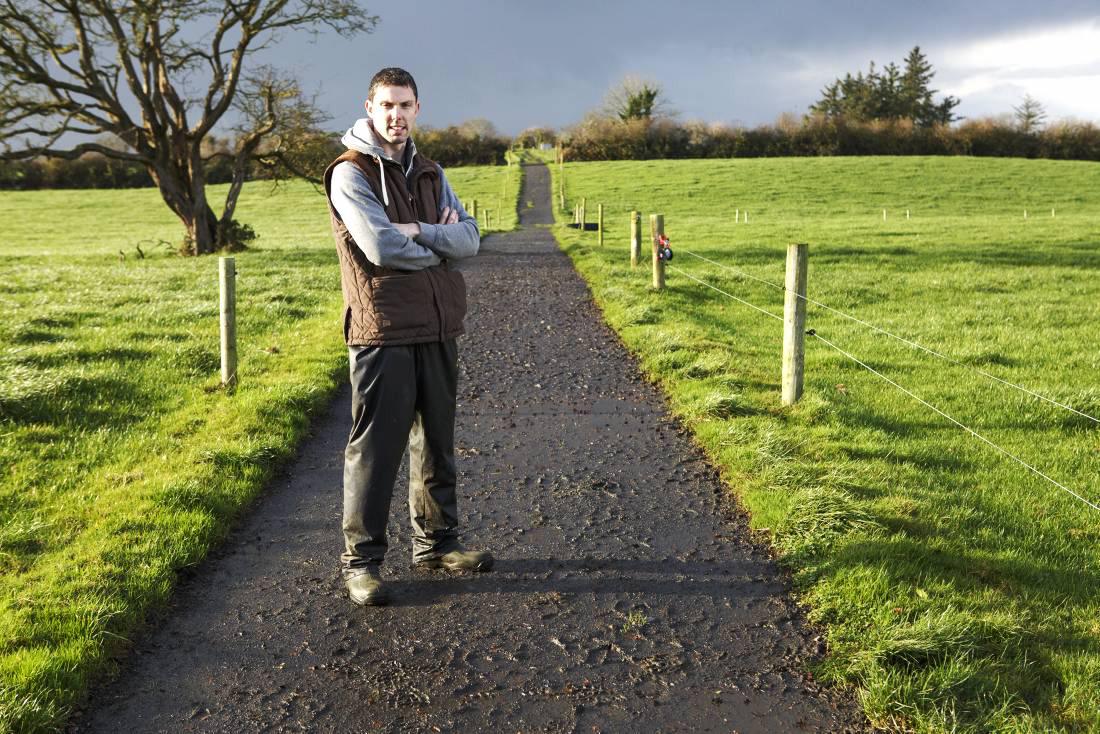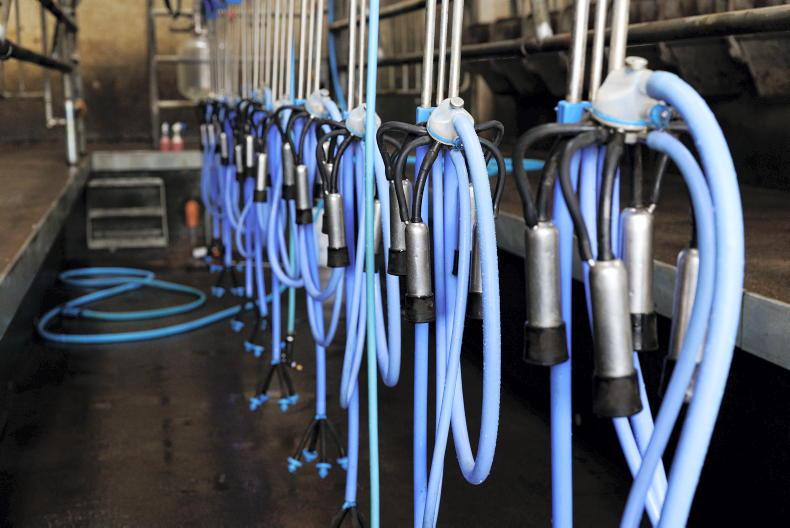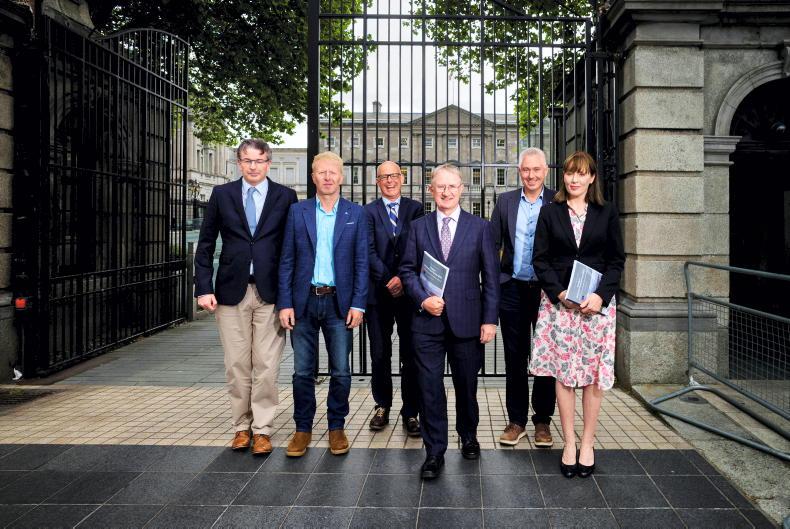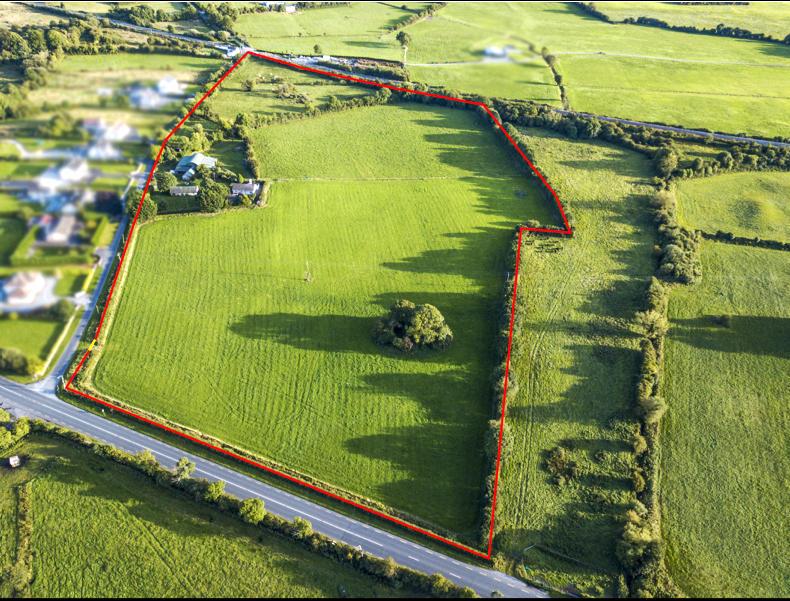That is the conclusion of an international study by Sean O’Donnell, a dairy farming Nuffield scholar from Ballina, Co Mayo.
He recently presented his report at the 2014 Nuffield Ireland conference.
His is his report summary*:
Overview
Dairy farming has consistently been the most profitable farming sector in Irish Agriculture. However farm fragmentation is a major limiting factor in relation to dairy expansion in Ireland.
The average farm in Ireland consists of 3.5 land parcels.
There is a huge appetite amongst Irish dairy farmers to expand their businesses post quota in 2015. Land availability around the milking parlour will now become the new “quota”. However mindset and adaptability will have a much greater influence on Irish farms and their ability to grow.
The development of second milking sites within a fragmented dairy farm will deliver a more profitable return than the alternative sectors, albeit less efficiently than if all of the lands were together.
Objectives
The aims and objectives are to find alternative solutions to the farm fragmentation issue:
To identify the various milking systems that could facilitate farmers to increase cow numbers where land fragmentation and milking platform size limits the development of viable spring calving units. The focus will mainly be on:
Automatic milking systemsSecond parloursZero grazing systemsOnce a day (OAD) milking through a second parlourTo determine which of these systems are the most cost effective and efficient in bringing those out-farms into milk production.To elaborate on the advantages and disadvantages of each system.To make recommendations for smaller scale dairy farmers who wish to increase cow numbers where land around the milking platform is limiting.
Research of this paper comprised of numerous study trips to Canada, New Zealand, Netherlands, the UK and throughout Ireland. A number of farm visits and interviews were conducted during these trips.
Research was also conducted through consultation of many written papers and on-line publications.
Findings:
There is a huge appetite from Irish farmers to expand post quota in 2015. Land availability around the Milking parlour will now become the new “Quota”.Adaptability and mindset will greatly influence to what degree individual farmers can expand their businesses.The development of second milking sites within a fragmented dairy farm will deliver a more profitable return than the alternative sectors, albeit less efficiently than if all the lands were together.Automatic Milking Systems (AMS) will work in a low input grass based system.AMS are capital intensive and this will limit their uptake – particularly on greenfield sites where additional infrastructure is limited.Developing a second milking parlour allows greater flexibility in terms of future expansion on outside blocks of land, although they rely heavily on additional labour where cows are milked twice a day.Zero Grazing Systems have a role in overcoming farm fragmentation, predominantly to reduce the dependence on meal feeding during the spring and autumn where the milking platform has been heavily stocked.The long term sustainability of the Zero Grazing System is questionable due to its demand on labour.Once a Day (OAD) milking will result in 20 –30% drop in milk production, but overall farm production can be partially offset with an increase in stocking rate.OAD milking is potentially the highest profit system in a farm fragmentation context, but it is hugely dependent on reducing production costs and labour input, in line with the drop in milk production.*Sean’s full report will be released by Nuffield Ireland in the coming weeks.
That is the conclusion of an international study by Sean O’Donnell, a dairy farming Nuffield scholar from Ballina, Co Mayo.
He recently presented his report at the 2014 Nuffield Ireland conference.
His is his report summary*:
Overview
Dairy farming has consistently been the most profitable farming sector in Irish Agriculture. However farm fragmentation is a major limiting factor in relation to dairy expansion in Ireland.
The average farm in Ireland consists of 3.5 land parcels.
There is a huge appetite amongst Irish dairy farmers to expand their businesses post quota in 2015. Land availability around the milking parlour will now become the new “quota”. However mindset and adaptability will have a much greater influence on Irish farms and their ability to grow.
The development of second milking sites within a fragmented dairy farm will deliver a more profitable return than the alternative sectors, albeit less efficiently than if all of the lands were together.
Objectives
The aims and objectives are to find alternative solutions to the farm fragmentation issue:
To identify the various milking systems that could facilitate farmers to increase cow numbers where land fragmentation and milking platform size limits the development of viable spring calving units. The focus will mainly be on:
Automatic milking systemsSecond parloursZero grazing systemsOnce a day (OAD) milking through a second parlourTo determine which of these systems are the most cost effective and efficient in bringing those out-farms into milk production.To elaborate on the advantages and disadvantages of each system.To make recommendations for smaller scale dairy farmers who wish to increase cow numbers where land around the milking platform is limiting.
Research of this paper comprised of numerous study trips to Canada, New Zealand, Netherlands, the UK and throughout Ireland. A number of farm visits and interviews were conducted during these trips.
Research was also conducted through consultation of many written papers and on-line publications.
Findings:
There is a huge appetite from Irish farmers to expand post quota in 2015. Land availability around the Milking parlour will now become the new “Quota”.Adaptability and mindset will greatly influence to what degree individual farmers can expand their businesses.The development of second milking sites within a fragmented dairy farm will deliver a more profitable return than the alternative sectors, albeit less efficiently than if all the lands were together.Automatic Milking Systems (AMS) will work in a low input grass based system.AMS are capital intensive and this will limit their uptake – particularly on greenfield sites where additional infrastructure is limited.Developing a second milking parlour allows greater flexibility in terms of future expansion on outside blocks of land, although they rely heavily on additional labour where cows are milked twice a day.Zero Grazing Systems have a role in overcoming farm fragmentation, predominantly to reduce the dependence on meal feeding during the spring and autumn where the milking platform has been heavily stocked.The long term sustainability of the Zero Grazing System is questionable due to its demand on labour.Once a Day (OAD) milking will result in 20 –30% drop in milk production, but overall farm production can be partially offset with an increase in stocking rate.OAD milking is potentially the highest profit system in a farm fragmentation context, but it is hugely dependent on reducing production costs and labour input, in line with the drop in milk production.*Sean’s full report will be released by Nuffield Ireland in the coming weeks.












SHARING OPTIONS